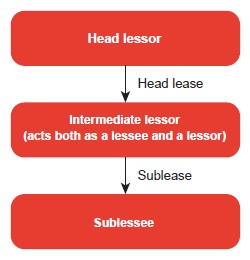Search within this section
Select a section below and enter your search term, or to search all click Leases
Favorited Content

Lease classification |
Intermediate lessor accounting treatment |
|---|---|
Sublease is classified as an operating lease
|
|
The original lease is a finance lease and the sublease is a sales-type or direct financing lease
|
|
The original lease is an operating lease and the sublease is a sales-type or direct financing lease
|
|
Excerpt from ASC 842-20-40-3
PwC. All rights reserved. PwC refers to the US member firm or one of its subsidiaries or affiliates, and may sometimes refer to the PwC network. Each member firm is a separate legal entity. Please see www.pwc.com/structure for further details. This content is for general information purposes only, and should not be used as a substitute for consultation with professional advisors.

Select a section below and enter your search term, or to search all click Leases











